Zagreb Still Dark Red, More Parts of Croatia Become Dark Red in Latest ECDC Map
ZAGREB, 21 Oct 2021 - Zagreb is still dark red and parts of central and eastern Croatia have been marked dark red on the European Centre for Disease Prevention and Control's latest COVID map, released every Thursday.
Red means the number of active cases in the past two weeks has been between 75 and 200 per 100,000 population and that 4% or more of the COVID tests have been positive. Dark red is those countries where the total number of cases in 14 days has been over 500.
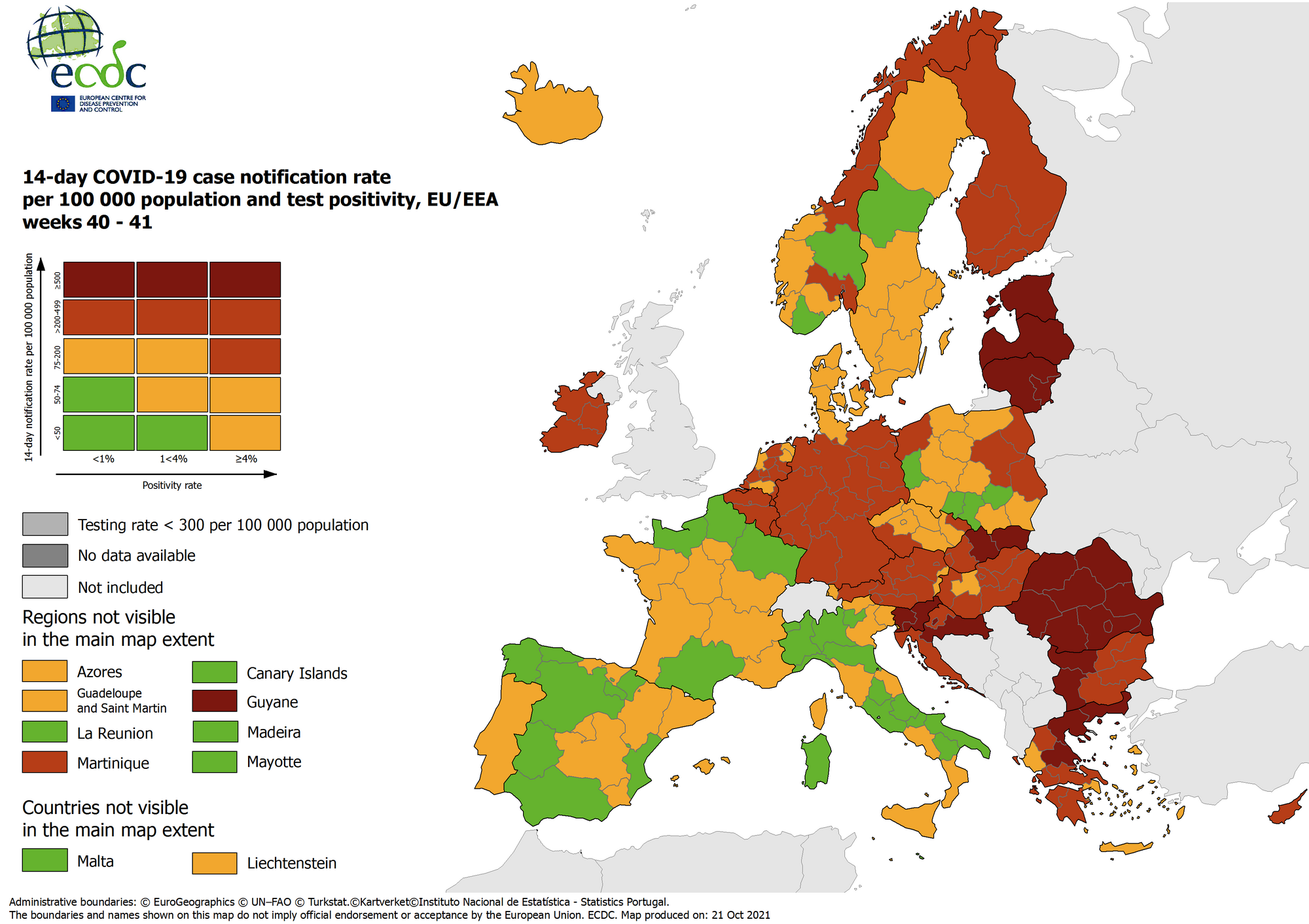
Today Croatia reported 3,053 coronavirus cases in the past 24 hours as well as 17 related deaths. To date, 46.27% of its population has been vaccinated against COVID, including 55.46% of adults, of whom 52.18% fully.
For more on travel in Croatia, follow TCN's dedicated page.
An Overview of Zagreb Summer Festivals: 5 Reasons You Should Visit in 2021
May 27, 2021 - Although Zagreb often gets overlooked in favour of some of the more famous Croatian summer destinations, the capital of Croatia deserves to be more than a brief stopover on your way to the coast. Here are the Zagreb summer festivals you don't want to miss in 2021.
Murtić100, May 25 - July 18
Marking the centenary of the birth of Edo Murtić, one of the most influential modernist painters in southeast Europe, the exhibition Murtić100, which will feature more than 200 Murtić's paintings, takes place at Home of Croatian Artists (colloquially known as Meštrović Pavillion). Meštrović Pavillion is open for visitors every day from 11 a.m. to 9 p.m.

Meštrović Pavillion (right) /Pixabay
European Short Story Festival, June 6 - June 11
This year marks the 20th anniversary of the European Short Story Festival (Croatian: Festival europske kratke priče - FEKP). To celebrate the occasion, this years' festival will also have two additional locations - Hvar Town on Hvar and the town of Vis on Vis. Holding the important title of one of the first short story festivals in Europe, European Short Story Festival thus far hosted more than 70 writers from 15 European countries and served as an inspiration for International Short Story Festival in Wroclaw, Poland. This year, the Festival will connect with authors from the other side of the pond - the internationally recognized Siri Hustvedt and Paul Auster. For more details, follow the Festival's official Facebook Page.
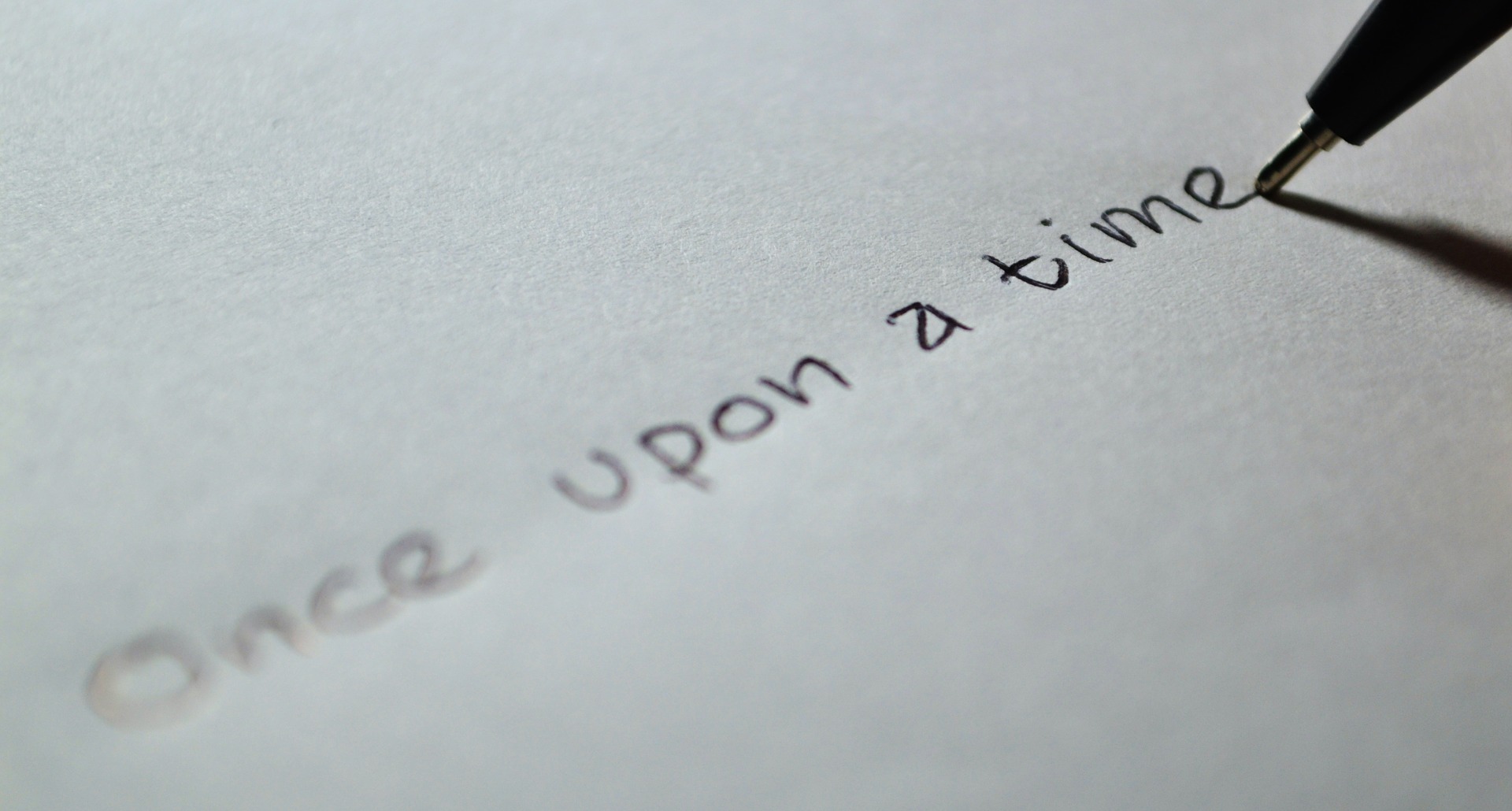
Pixabay
ZagrebDox, June 13 - June 20
This year's 17th edition of the International Documentary Film Festival ZagrebDox takes place at Zagreb Student Centre and Tuškanac Open Air Cinema. The programme is divided into 8 sections - State of Affairs, Controversial Dox, Masters of Dox, Teen Dox, Thriller Dox, and Love, along with two retrospective programmes - one dedicated to Croatian female documentary directors, the other to the Swiss theatre and film director Milo Rau. With 80 short and feature-length titles to choose from, ZagrebDox promises to give an overview of the finest works the documentary film world has to offer.

Pixabay
Grič Evenings, July 1 - July 15
Lovers of classical music are in for a treat! For a whole fortnight, starting July 1, just as the dusk begins to settle, Atrium of Klovićevi Dvori in Zagreb's Upper Town will be filled with the sounds of music commemorating the 40th Grič Evenings. We are looking forward to the programme announcement.

Pixabay
Croatian National Theatre Summer Evenings, May 29 - July 3
The Croatian National Theatre in Zagreb hosts an 'open-air' programme on the Republic of Croatia Square (Croatian: Trg Republike Hrvatske), right next to the Croatian National Theatre building.
The programme will open on May 29 with a concert to mark Statehood Day and Zagreb City Day, respectively. Visitors will get a chance to watch excerpts from some of the most famous operas such as Barber of Seville and The Marriage of Figaro, as well as the ballets The Swan's Lake and Giselle, the choreography of the latter having been developed by the champion of the Paris Opera Ballet, José Carlos Martínez.

Croatian National Theatre/Pixabay
And there you have it - there are at least 5 reasons to extend your stay in Zagreb and discover its vibrant spirit!
For more on travel in Croatia, follow TCN's dedicated page.
Zagreb Trams - Iconic and Integral to Life in Croatia's Capital
November 20, 2020 – Today is the 20th anniversary of the completion of the Zagreb trams network. Namely, on this day in 2000, the last current line from Jarun to Prečko was opened. To celebrate, we take a look at the iconic, blue trams of Zagreb
It's all too easy to take for granted the things you see every day. That's certainly true of city residents in their feelings for Zagreb trams. As it currently stands, the Zagreb trams network was completed on 20th November 2000, when the existing line to Jarun was further extended to Prečko, which lies to the west of the city centre. In the two decades that have followed, Zagreb trams have cemented their place as an icon of the city, have helped changed the cityscape of Zagreb and have facilitated the friendships, education, careers, relationships and businesses of the Croatian capital over millions of journeys. All without much fanfare or celebration.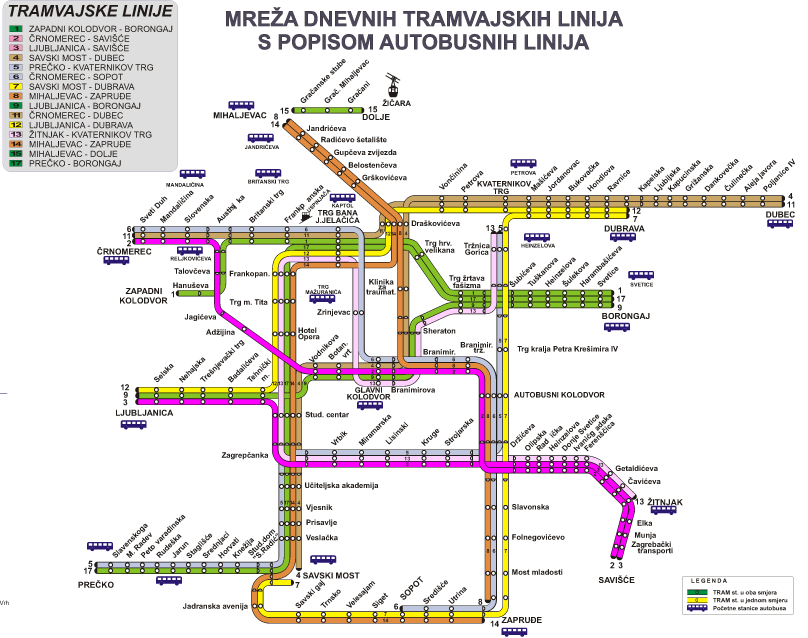 The Zagreb trams network
The Zagreb trams network
The Zagreb trams network consists of 15 lines which connect suburbs as far west from the centre as Prečko (8 kilomtres), as far east as Dubec (8 kilometres), north to Mihaljevac (3 kilometres) and south to Avenue Dubrovnik in Novi Zagreb (an additional line, running further south to Velika Gorica, servicing Zagreb Franjo Tudman airport, is planned). Throughout the night, four lines remain, connecting essential workers, night-time workers and late-night revellers (although they are sometimes replaced by night buses due to maintenance works).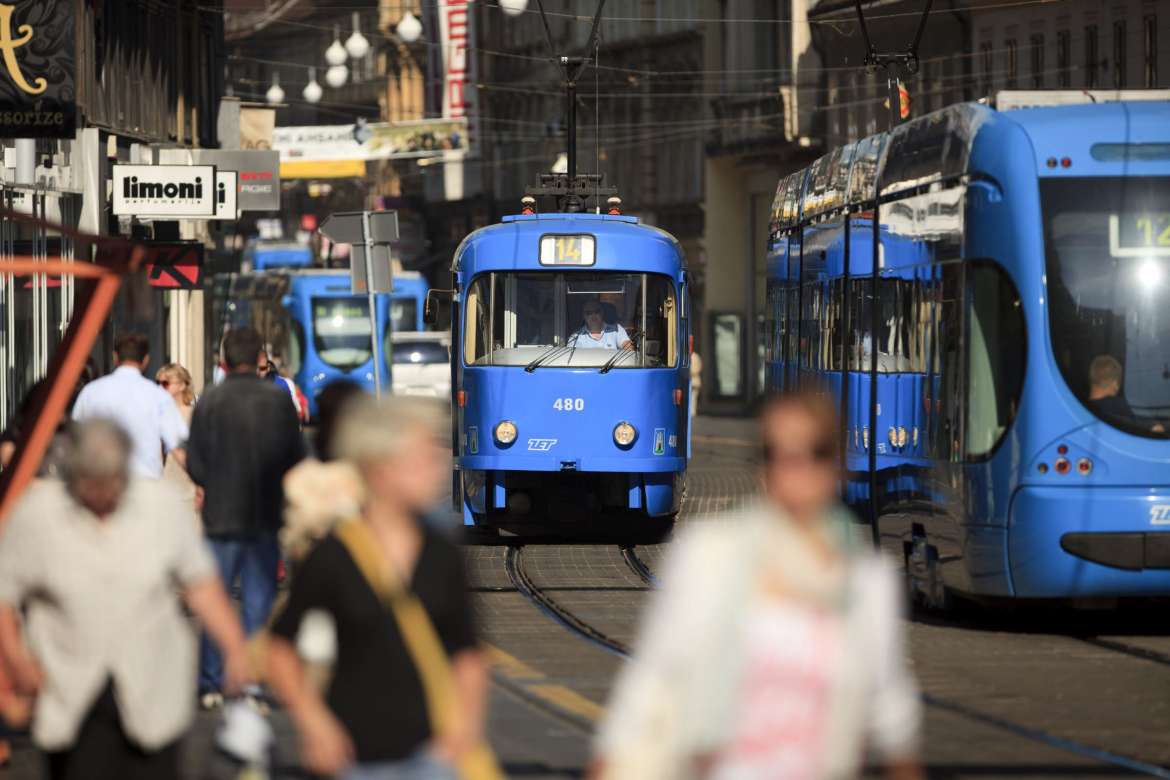 © Romulić & Stojčić
© Romulić & Stojčić
The completion of the line to Prečko catalysed the expansion of the westerly-lying suburbs of Špansko and Prečko. The change visited upon the rest of the city by the Zagreb trams network has been no less fundamental. Certainly, at weekends, Zagreb can confidently claim to be a 24-hour city because of its trams. Day or night, no place within the city suburbs is too far to reach because of Zagreb trams.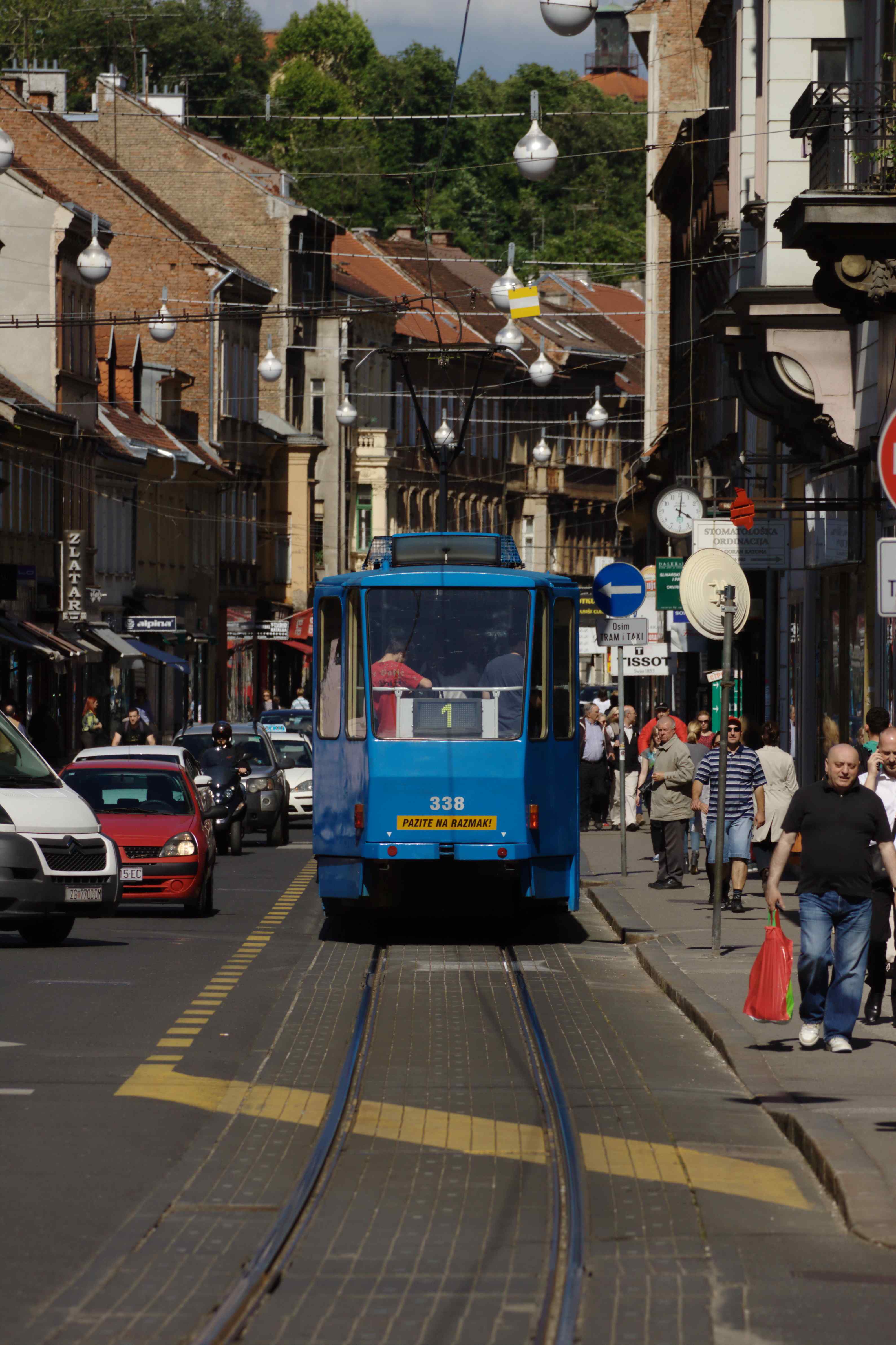 © Aktron / Wikimedia Commons
© Aktron / Wikimedia Commons
So reliable and well used are Zagreb trams that it's perhaps understandable why they are sometimes taken for granted. Whole generations now living in the city do not even know a Zagreb without a tram network. Its importance to all was put into sharp focus during the early part of 2020 when the Zagreb trams network was temporarily closed in response to the COVID-19 pandemic. Perhaps only then was the true scale of integration between Zagreb trams and the lives of city residents truly recognised. 'You don't know what you've got 'til it's gone.'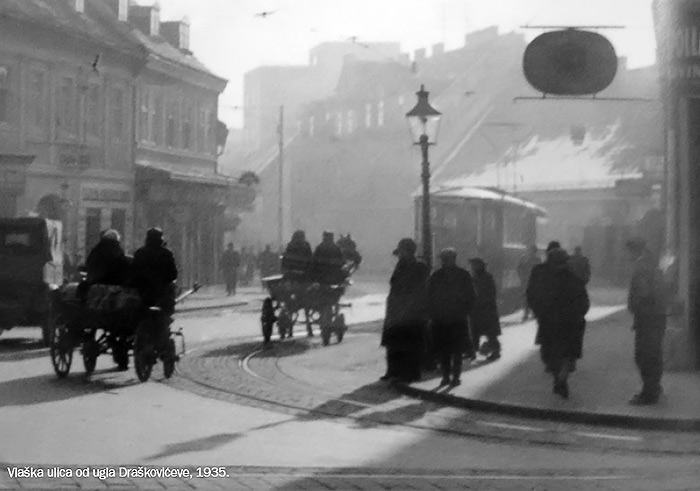 Zagreb trams on the corner of Vlaška and Draškovićeva streets in 1935 © Public domain
Zagreb trams on the corner of Vlaška and Draškovićeva streets in 1935 © Public domain
Lest we forget to give credit where credit is due, here are some interesting facts about Zagreb trams.
The Zagreb trams network was started in 1891 with the opening of the first line. Back then, the trams were pulled by horses - the electric tram didn't debut in Zagreb until 1910. The first journey started at the site of today's Technical Museum and the first track ran for some 8-kilometres. So fascinated were Zagreb residents with the introduction that some 20, 000 passenger journeys were made on the second day. The population of Zagreb at the time was 40, 000.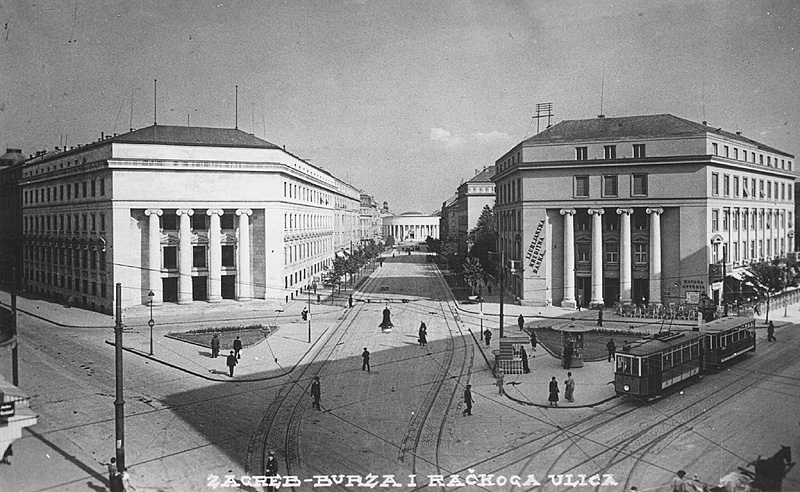 The route from Draškovićeva to Džamija in the 1930s © HappyV
The route from Draškovićeva to Džamija in the 1930s © HappyV
Osijek in Slavonia, east Croatia, was the first city in the country to have trams. The first international railway line into Croatia was built to facilitate holidays on the Kvarner coast, but the rail line ended in Rijeka. The upper echelons of Austro-Hungarian society who took this train were transported to their preferred destination – Opatija – by tram.
The most-modern low floor trams that now run in Zagreb were introduced in 2005.
There are two separate tram stations in Zagreb which have the same name – there are Heinzelova stations on the lines both to Savišće and Borongaj. The view from Džamija up to Draškovićeva and the cathedral in 1947 © Romák Éva
The view from Džamija up to Draškovićeva and the cathedral in 1947 © Romák Éva
The Zagreb trams network has 116.3 kilometres (72.3 miles) of metre gauge track. It is the same track all over the city, except for the line which runs north to Mihaljevac, which is unique. This line is both the fastest and the shortest in the Zagreb trams network. It services some of the most desirable Zagreb suburbs in which to live. But, of course. The inclusion of the Mihaljevac line brings the track total to 120 kilometres.
Children under the age of six do not require a ticket to ride on Zagreb trams.
There are six different types of tram currently running on the network. Zagreb residents have given nicknames to different models over the years – Đuro was named after a factory that made it, Bik, meaning bull, got its name because it was stronger than older models, Čeh was named after Czechoslovakia, the country where it was produced, Katica, Genšer and Zeko meaning bunny. Everyone likes the most modern trams in summer, because they have air conditioning but, in winter, city residents greet with joy the approach of older models on their route – the seats are heated to a toasty temperature.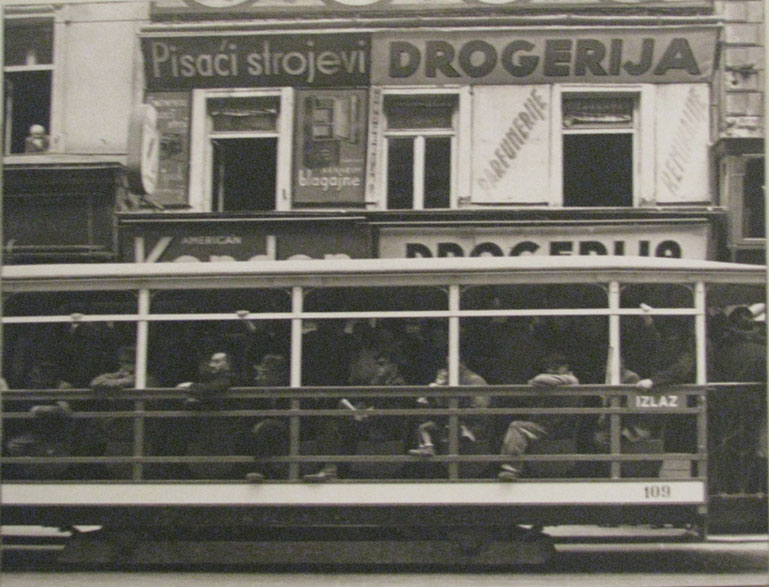 A photograph of how the open carriages of Zagreb trams used to look. The original of this photograph can be found in © Zagreb City Museum
A photograph of how the open carriages of Zagreb trams used to look. The original of this photograph can be found in © Zagreb City Museum
The longest single direction journey you can make on Zagreb trams is between Prečko in the west of the city and Dubec in the east. The journey takes around 76 minutes. You have to change tram only once to make this journey.
Apart from being the most environmentally friendly motorised public transport option in the city, the trams have massively contributed to Zagreb being a modern eco-friendly capital. Many city tram networks run down the middle of roads. While some lines in Zagreb are also placed here, many instead run at the sides of roads. This positioning – plus the way the lines sit in the road – make them problematic for cyclists. And this is partially the reason why Zagreb has 220 kilometres of dedicated cycle paths which exist not on the roads, like in other cities, but on the pavements.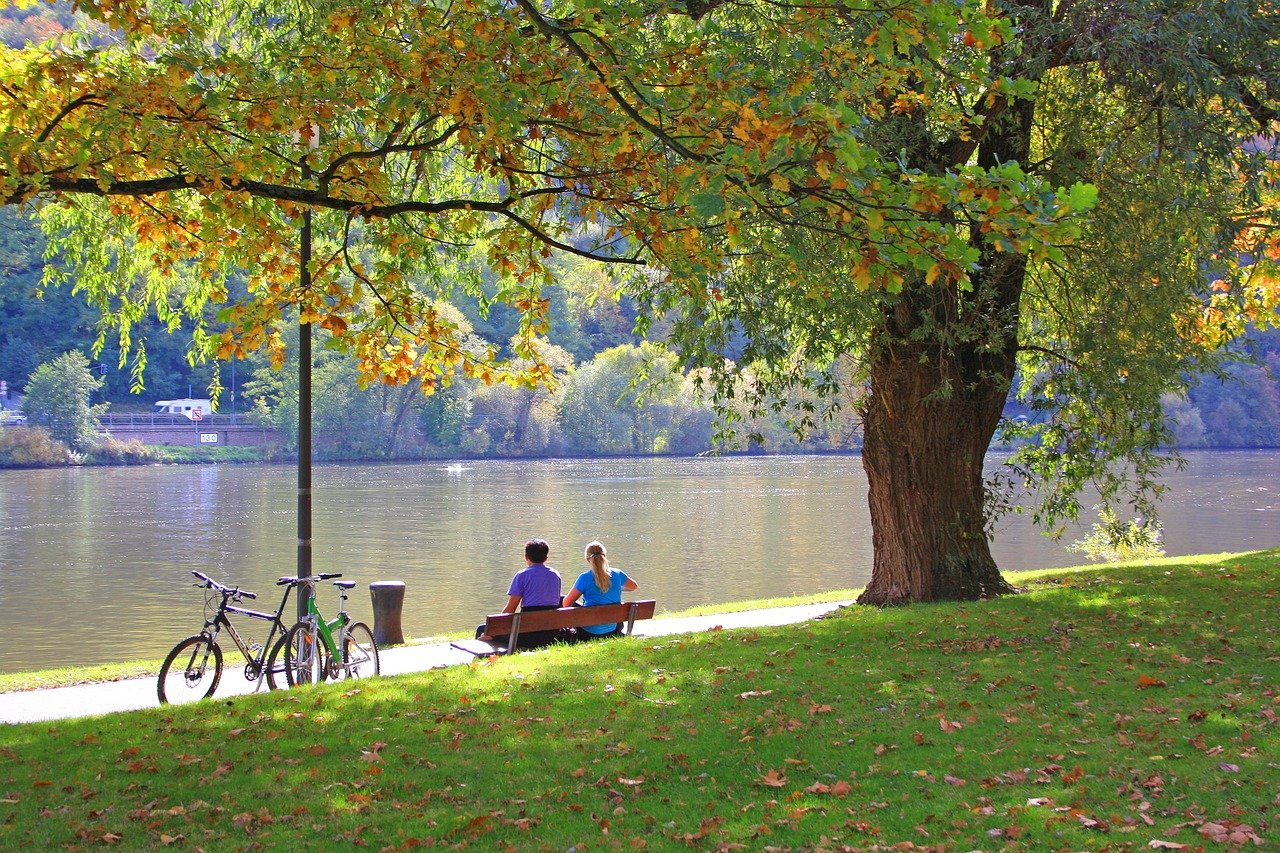 Zagreb's generous 220 kilometres of dedicated cycle paths come partially as a result of the positioning and construction materials of the Zagreb trams network © G Schneider
Zagreb's generous 220 kilometres of dedicated cycle paths come partially as a result of the positioning and construction materials of the Zagreb trams network © G Schneider
One of the world's worst tram accidents happened in 1954 on the Zagreb network. The tragedy took place on the old, steep stretch running near Mirogoj cemetery. Nineteen passengers were killed and thirty seven were severely injured.
During the day, each line runs on average every 5–10 minutes. Almost all stations on the Zagreb tram network sit on at least two lines.
Zagreb's tram network transported 204 million passengers in 2008.
A few years ago, the lowest fare tram ticket was 10 kuna. Zagreb trams were then often ridden by people without a ticket (and still are). The company who runs the tram network, ZET, decided to decrease the price of the lowest ticket to 4 kuna. Since doing so, many more people buy a ticket for Zagreb trams. You can travel for 30 minutes on any tram or trams with a 4 kuna ticket.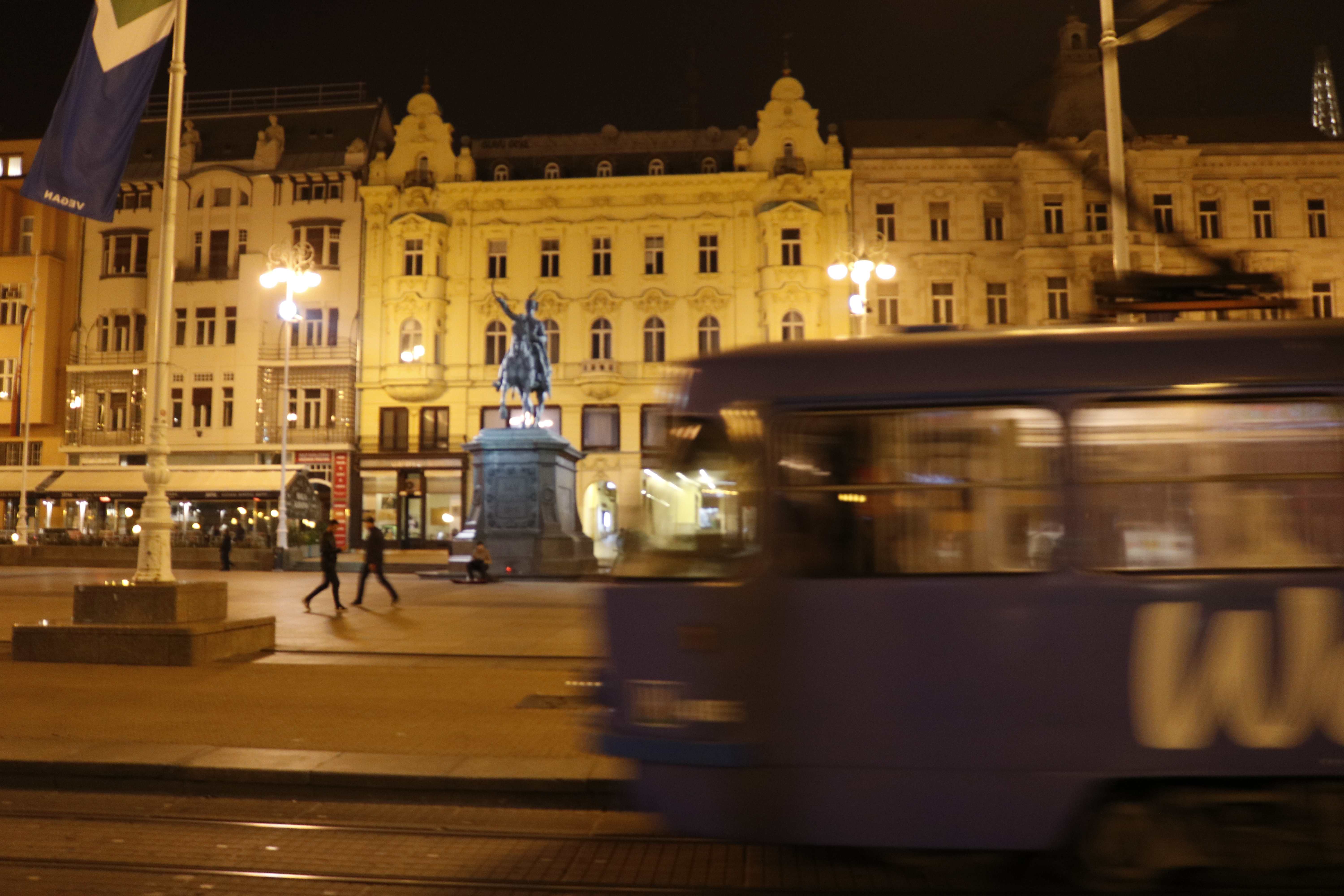 © Marc Rowlands
© Marc Rowlands
All uncredited photographs courtesy © ZET
Zagreb Streets Friendly For Feet - It's European Car Free Day Tomorrow
ZAGREB, September 21, 2020 - Residents and visitors to the Croatian capital will tomorrow learn how Zagreb street life was historically, as the city centre banishes almost all vehicles for European Car Free Day
What would Zagreb's residents of the past think of the city if they saw it today? The Croatian capital's boundaries now extend many kilometres into the surroundings, the huge Sava river is no longer any impediment to travel. The people of the city now live on both sides. Skyscrapers score the sky and well over half a million people can be seen on its streets, roads and highways.
Apart from the size and the unfamiliar building materials, the biggest shock would probably be the speed of the city. Buses and cars race down multiple-lane avenues and trams take you into almost every neighbourhood you'd want to visit. Kaptol, Zagreb in 1905, when almost every day looked like European Car Free Day
Kaptol, Zagreb in 1905, when almost every day looked like European Car Free Day
Tomorrow, Zagreb will return to a pace more familiar to former inhabitants as the city observes European Car Free Day. Motor vehicles will be banned from much of the city's centre between 8 am and 8 pm.
The area of the city centre observing European Car Free Day has the following boundaries; Trg bana Josipa Jelačića - Jurišićeva - Palmotićeva (western edge) - Boškovićeva (northern edge) - Hebrangova (northern edge) - Gundulićeva (eastern edge) - Ilica (northern edge) - Mesnička (eastern edge to Streljačka) - Mesnička - Demetrova - Ilirski trg - Radićeva - Trg bana Josipa Jelačića.
These streets form some of the oldest parts of Zagreb. Long have they been trodden by the pedestrians to whom they'll return tomorrow. Those travelling into the centre by car must park on the outskirts and take public transport into the heart of the city. Trams, taxis and buses will operate as normal.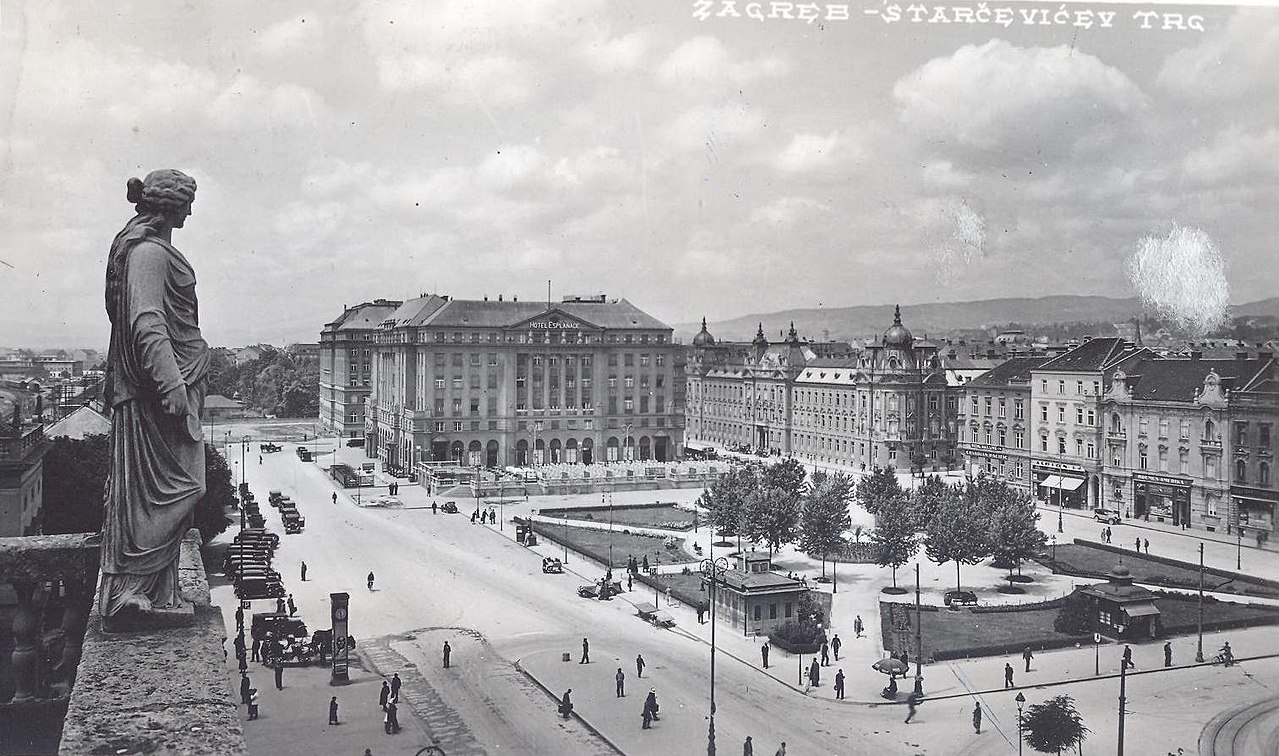 Cars began to be seen more regularly in Zagreb during the first half of the 20th-century. Not so much a European Car Free Day as a Croatian Tram Free Day - the city's famous tram network wasn't nearly so developed back then. The first city in Croatia to have trams was actually Osijek, who introduced a horse-pulled tram network in 1884.
Cars began to be seen more regularly in Zagreb during the first half of the 20th-century. Not so much a European Car Free Day as a Croatian Tram Free Day - the city's famous tram network wasn't nearly so developed back then. The first city in Croatia to have trams was actually Osijek, who introduced a horse-pulled tram network in 1884.
The observance of car-free days is actually over 65 years old, although originally they were introduced in response to oil crises, not for environmental reasons. The more modern reason for having such days is to return city streets to pedestrians. Car-free days have taken place independently in European nations since the mid-1990s, and it 2000 they became aligned on the fixed date of 22 September. European Car Free Day is also a car-free day in many other countries outside of Europe, although this continent is the only one to currently observe it throughout its boundaries.
All uncredited photos lie within the public domain.
For the latest travel info, bookmark our main travel info article, which is updated daily.
Read the Croatian Travel Update in your language - now available in 24 languages


